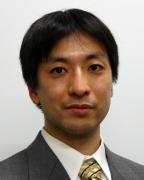経歴
-
2020年04月-継続中
早稲田大学 理工学術院 基幹理工学部 機械科学・航空宇宙学科 教授
-
2018年08月-2020年07月
文部科学省 研究振興局 学術調査官(兼任)
-
2019年04月-2020年03月
早稲田大学 理工学術院 基幹理工学部 機械科学・航空学科 教授
-
2014年04月-2019年03月
早稲田大学 理工学術院 基幹理工学部 機械科学・航空学科 准教授
-
2012年04月-2014年03月
早稲田大学 理工学術院 基幹理工学部 機械科学・航空学科 専任講師
-
2010年06月-2012年03月
Harvard University School of Engineering and Applied Sciences (SEAS) Postdoctoral Fellow
-
2007年04月-2010年06月
東京大学 大学院情報理工学系研究科 知能機械情報学専攻 助教
-
2006年05月-2007年03月
東京大学 大学院情報理工学系研究科 知能機械情報学専攻 助手
-
2006年04月-
東京大学 大学院情報理工学系研究科 知能機械情報学専攻 技術補佐員
-
2004年04月-2006年03月
日本学術振興会 特別研究員


Click to view the Scopus page. The data was downloaded from Scopus API in January 02, 2026, via http://api.elsevier.com and http://www.scopus.com .